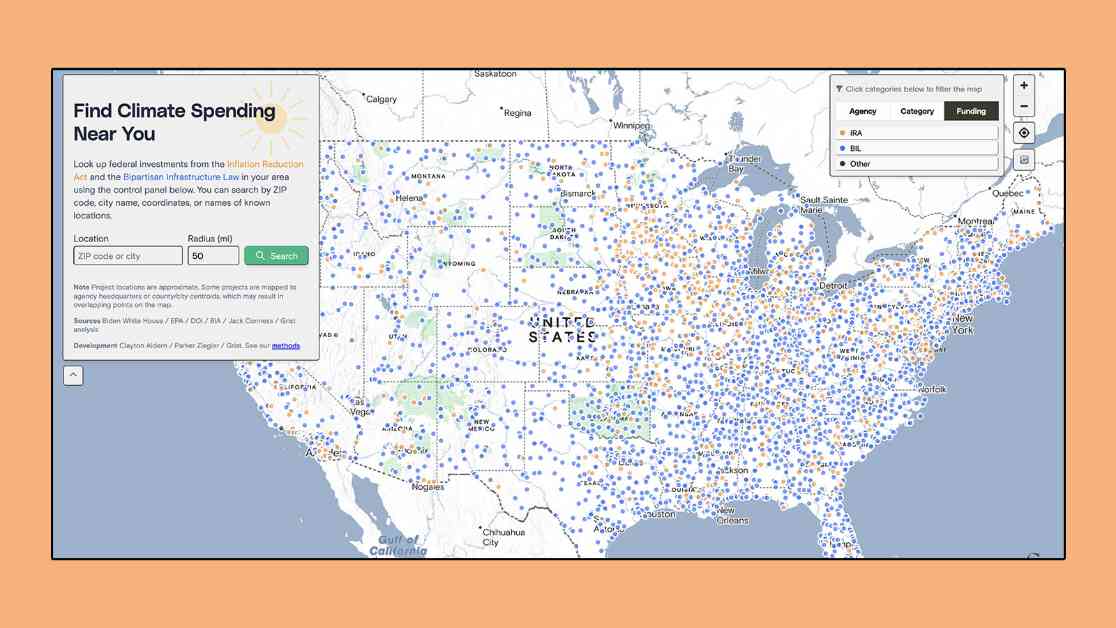As President Donald Trump took office, a significant amount of funding for infrastructure and climate-related projects had been announced under the Inflation Reduction Act and the bipartisan infrastructure law, totaling nearly $700 billion. These funds were allocated to various community and local projects, ranging from clean energy initiatives to water system upgrades.
While some of these projects have already received their funding and been completed, uncertainty looms over the future of the remaining undistributed money due to the Trump administration’s freeze on certain forms of federal funding. The question arises: which climate and infrastructure projects in your community and across the nation may now be at risk?
To address the significance of these legislative actions, Grist, a renowned news source focusing on equitable solutions to climate change, has developed a groundbreaking tool. This tool integrates data from multiple sources to unveil where over $300 billion of the pledged funds have been allocated across the United States. By simply entering a ZIP code, city name, or any other location in the search box provided, you can explore projects within your chosen area.
Each point on the interactive map represents a distinct project, offering detailed insights into the funding amount, project description, and the agency responsible for implementation. Additionally, users can expand the data table for more information or download their search results. When available, projects are linked to federal spending databases to indicate whether funds have been dispersed.
The data utilized in this innovative tool is derived from a combination of archived federal websites, current government data portals, and independent data repositories. Grist’s dedicated data team meticulously cleaned, standardized, and merged these diverse datasets to present a comprehensive overview of federal infrastructure spending facilitated by the Inflation Reduction Act and the infrastructure law.
For those interested in learning more about the methodology behind this tool, gaining access to the underlying code, or delving into detailed documentation regarding data processing and mapping procedures, visit Grist’s open-source repository on GitHub.
In conclusion, the intersection of climate and infrastructure funding is a critical aspect of national development, with implications that resonate at the community level. By leveraging innovative tools and data-driven insights, we can navigate the complexities of federal spending, ensuring transparency and accountability in the allocation of resources.
Exploring Climate and Infrastructure Projects
As communities across the United States eagerly anticipate the implementation of infrastructure and climate-related projects, the need for transparent tracking and monitoring of funding allocations becomes increasingly apparent. Through Grist’s user-friendly tool, individuals can now explore the landscape of projects within their vicinity, gaining valuable insights into the distribution of funds and the progress of initiatives.
The Impact of Federal Funding Freezes
With the specter of federal funding freezes looming over climate and infrastructure projects, stakeholders at all levels must remain vigilant and proactive in safeguarding these critical initiatives. By shedding light on the potential risks faced by undistributed funds, Grist’s tool empowers citizens to advocate for the timely and effective utilization of resources for the betterment of their communities.














